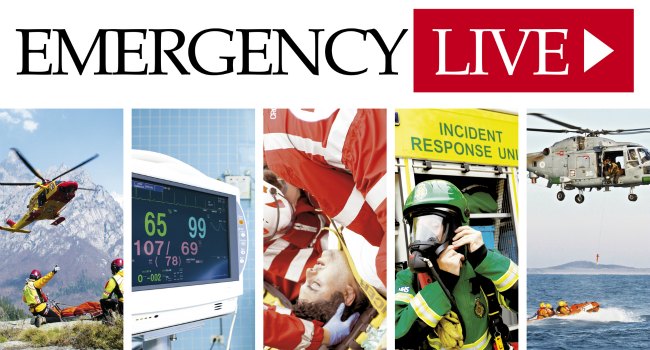
Wilderness Medicine Training in a Fictional Regional Disaster
Jessica Andrusaitis MS1
Robert Katzer MD MBA
University of California, Irvine
Center for Disaster Medical Sciences
http://www.cdms.uci.edu
The University of California, Irvine Department of Emergency Medicine and the San Diego Naval Medical Center collaborated for the second annual field training exercise on wilderness medicine. The exercise challenged resident physicians in emergency medicine and other medical professionals on the various skills of wilderness and disaster medicine. The morning began with the forty-five participants gathering on the course site, atop the cliffs of San Onofre State Beach. They were subsequently divided into multi-disciplinary teams. The team members consisted of resident physicians from the two aforementioned emergency medicine programs, as well as medical students, United States Navy healthcare professionals and members of the United States Customs and Border Protection.
Participants had been previously instructed to come to the event prepared with packs as if they were traveling internationally to attend a wilderness medicine continuing medical education field workshop. During the morning briefing, teams were instructed on the fictional disaster scenario. The previous evening, an earthquake and subsequent tsunami struck the beachside tourist region of the fictional nation where participants had flown to attend the workshop, resulting in damage to local infrastructure. Damage extended to the nearby nuclear power plant, potentially resulting in radiation release. Teams were given maps of the area labeling the routes of several loops they were to complete on the course and the stations they needed to visit.
The exercise concept originated with the pioneering MedWAR Challenge, established in the state of Georgia, United States during 2000. Throughout the day, the teams were faced with several simulated patient care scenarios that tested their medical knowledge, survival skills, and rescue strategies under conditions of limited available resources. They were confronted with small-scale issues like a single victim with a distal lower extremity injury, to more complex scenarios like multiple casualties requiring the team to select a leader to coordinate logistically demanding rescue operations. Another specific scenario involved a cardiac arrest in which the team had to assess the practicality of continuing cardiopulmonary resuscitation in the context of limited resources. Teams had to demonstrate their survival skills by starting a fire, building a shelter, and purifying drinking water. One scenario involved removing an injured individual with a gunshot wound from a scene while under direct threat from hostile locals. Another station involved treating multiple patients with various levels of radiation exposure. Between each of these stations, teams were required to stop at stations and answer wilderness medicine based questions. These questions involved such topics as toxic plants, environmental illness, radiation poisoning, lightning, animal bites, and toxic ingestions.
The exercise was of tremendous benefit to each of the different disciplines represented. Competitors supported their teams with their own strengths, while learning from the distinct skillsets of other team members from different clinical and operational backgrounds. The training builds the cross-disciplinary understanding and relationships that will be necessary to successfully address the challenges of a medical emergency in the wilderness or a disaster. All involved organizations considered the training a tremendous success and are very much looking forward to similar future collaborations.


